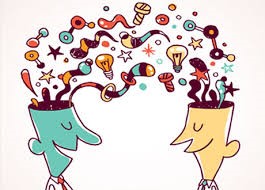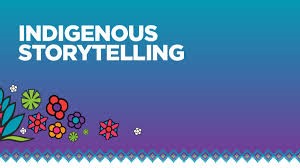The Inquiry Project Brainstorm

https://www.kissclipart.com/sharing-of-ideas-clipart-idea-clip-art-at5p6o/
As I move further in my understanding of the ways to approach inquiry-based learning, I have realized that the topic of Storytelling across cultures for grades 5 can also be taken up for students of grades going upwards and can be an ongoing project that can be picked by the next grade teacher where it was left last. My focus, however, stays with introducing this topic to students of grade 5. The ideas and the entire focus of this project will stem from the K-12 BC Curriculum which has clearly laid out the requirements of storytelling and how to approach it in its detailed description. The curriculum reflects a strong commitment to integrating important perspectives and learning from a variety of sources. It is interesting to note that storytelling revolves around culture-based perspectives and spreads across Social studies, English language arts, and Literacy with Information and Communication Technology. Social studies being the study of people in relation to each other and their world and draw upon many disciplines and fields of study. Culture-based perspectives help grow our awareness of how people have lived on the land where we are, or where does the story originate from. I also intend to explore the role that Aboriginal peoples have played in the stories of this land to be recognized. Integration of language arts Is also an important aspect that needs to be covered under the canopy of storytelling. This specific correlation intends to exploit the many connections between Social Studies and Language Arts and to more easily facilitate the use of Social Studies themes in English Language Arts class time. Integration of Language Arts into this Social Studies is simply through the consistent reference to, and use of, historical fiction and other forms of literature (for example poetry, songs, short stories, essays, journals) as student and teacher resources for this course.
The brainstorming session in the class was extremely insightful, where all members in our group could speak freely about their chosen topic and we gave our inputs regarding the same as we all went ahead to discuss the questions that we all had come across while exploring our topic further. It helped me evolve my inquiry questions and helped me get some direction. April, a group member helped me understand how I could incorporate Aboriginal Storytelling in my inquiry project. I realize that storytelling is both a gift and a very old custom, sanctioned by Indigenous people, to teach, entertain, and remember
https://saskpolytech.ca/events/indigenous-lihb tstorytelling.aspx
Keeping in view the BC’s new curriculum that includes several core competencies that acknowledge and advance the cultural diversity of Canadians, including its Indigenous peoples further reflecting both the First Peoples Principles of Learning and the educational calls to action. The curriculum indicates that the learning process involves more than processing information. It is a broad concept that encompasses the areas of life which will aid in the well being of self and those who are around us. Also, learning motivates us to know that it is important to cultivate patience and value time, we are ourselves responsible for our actions and we must initiate the exploration of our own identity. Memory, history, and story, all are a source of learning. Learning also refers to the impact of experience on behavior and the experience may vary from knowing about our ancestors, land, and indigenous knowledge to our generational roles and responsibilities. However, learning can be reflexive, reflective, experiential, relational, or holistic and help learners to lead a full life. At all times it should be kept in mind that all knowledge is sacred and needs to be acknowledged as also be shared carefully.
While discussing my Topic with my professor Dr.Jodi, I discussed if I could take up “How has Parenting styles differed over time?” after we discussed both the topics she guided me to blend the two by asking questions about “Storytelling”. She also guided me to look at storytelling from the perspective of the change we have seen in our children over centuries through these stories. Another important question that came across while we were discussing further was “How do parents teach values through stories?”

https://images.app.goo.gl/sxQ3FevDe7Vnp85z5
Jardine (2016) explains that in our endeavor to give our children the very best of what we can we have to ensure not to fall prey to the marketing tactics of publishers and other market-driven resources that constantly work upon the innocence and sheer love of parents and caregivers to benefit out of it. It is always a source of joy when we learn to play along and read it all out with our child.
Key highlights from Topic Exploration, and some key questions for inquiry within the topic.
As discussed in my topic exploration students shall be exploring and asking questions on several sub-topics layered in the storytelling. This is keeping in mind the Socratic principle of question and answers and learning to examine the self in the process of learning. Also, students would be given ample opportunities to work together in groups and support each other in problem-processes. This process shall include working with real and virtual online partners.
A description and broad strokes plan for the proposed Inquiry Project.
Using some essential questions (Wiggins & McTighe 2013) helps both teachers and students to understand that the learning that they are aiming at is meaningful and helps motivate deeper connections both interpersonal and interdisciplinary. It is perhaps a very transparent way to put across the intentions of the project in front of students and assists teachers to get the direction they are headed to.
ENGLISH LANGUAGE AND ARTS
- What are the reasons that cultures and individuals create narratives of their experiences?
- What makes a story effective for its purpose?
- How can we use storytelling and story writing to solve everyday problems?
- In what ways can we express ourselves in the absence of a language we do not understand?
(BC Ministry of Education. (2015/2018)
SOCIAL STUDIES
1.How does our understanding of the culture of other places and people help us communicate with them effectively?
2.How do we overcome prejudice and social bias?
3.How do stories confirm with what we study in history to help us realize that ideas and actions individuals and groups have consequences and shape events?
4.How can we help people struggling in underprivileged regions of the world lead better lives?
ETHICS AND MORALITY
- How is our perception of good and evil shaped by stories? Films, books, games, theatre, songs, and dances which is the best way to narrate a story?
- Do stories help in rebuilding our values and beliefs?
- How do different cultures shape our definitions of good and evil?
GLOBAL COMMUNITY
- Are there any universal characteristics of belief systems that are common across all cultures? How can they bring us together?
PERSONALITY DEVELOPMENT
- If you were to leave behind a legacy for future generations, what would it be and why?
- How can stories from different cultures lead to constructive change and a positive outcome for everyone involved?
- Is it important to be grateful?
- What are the basic elements of relationships across the globe? Do they change or grow over time?
- What role do I play in defining my future?
In the process of finding the right questions that shall assist students to get direction in the inquiry on Storytelling Across Cultures, I have drawn the Big Ideas from the BC curriculum. They are: creative use of language can help generate joy and happiness. Stories can be helpful in the imaginative and some real connections to all parts of the world. Another motivating idea is that we all interpret the written word differently and have our own frame of reference and we need to respect that. Lastly vivacious and sportive use of language introduces us to new vistas that can open owing to language. Storytelling also bears the capacity to foster a sense of wonder and question what we hear, read, and view, which can further us in becoming better-informed citizens.
 https://boomdesigns.com/10-rules-all-creatives-need-to-lead-a-successful-brainstorming-session/
https://boomdesigns.com/10-rules-all-creatives-need-to-lead-a-successful-brainstorming-session/
I have drawn my inspiration from some basic learning standards that conform to the curriculum that shall be adhered to in my inquiry project. I shall be using a variety of resources that shall be oral, written, visual, and digital texts. Shall aim at building upon the existing knowledge and move further. Another aspect that I intend to keep in mind is encouraging group work as that shall help students to exchange intercultural knowledge, which is at the heart of this project.
Keeping in view the five core principles of effective teaching framework (Friesen, 2009), I shall design my lessons that shall encourage students to think and delve into the stories they share with each other and try to find answers to the myriad questions that arise in the process and some of which I have attempted to explore in this brainstorming activity keeping the students perspective in mind. Again there is a time and place for everything and that needs to be respected. The whole process of finding of the diversity that exists in cultures shall hopefully build some well-meaning connections and also guide students to the universal learning that we all are a part of one big whole.
